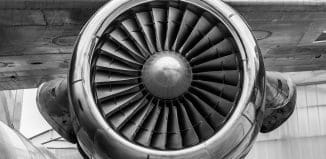New Game Changing Drone Camera
This post is also available in:  עברית (Hebrew)
עברית (Hebrew)
While drones are great at taking pictures and high-quality video during the day or in camera-ideal lighting, in low light situations traditional cameras need to be able to see in a way that is comparable to the way eyes work. If a drone camera is to guide itself through darkened rooms and buildings, it needs to see in low-light conditions while quickly moving.
A research team from the University of Zurich, Switzerland, has developed a type of camera that will allow drones to essentially “see in the dark” using what they call Dynamic Vision Sensor (DVS).
According to defenseone.com, the new type of visual sensor will allow drones to see as human eyes do. That will enable small drones to be more useful in both “civilian and military applications,” in civilian rescue scenarios such as finding trapped people.
The research was funded in part by DARPA, which is looking for solutions to make use of militarised drones that can wage war from a street level and in locations where GPS data and other visual data might not be freely or readily available. Such a drone with a DVS camera could possibly be used in dense urban environments where an autonomous UAV could be useful for not only reconnaissance but also offer close-air support during street battles.
Traditional cameras work by capturing light and its intensity and treat all data received equally. While moving rapidly as would a drone, and when in a low light situation, the pictures that a drone would have to work with would be blurred and they would not be very useful for computer vision algorithms, according to ibtimes.co.uk.
The DVS works differently. “Instead of wastefully sending entire images at fixed frame rates, only the local pixel-level changes caused by movement in a scene are transmitted – at the time they occur,” explained Davide Scaramuzza, one of the paper’s authors and the head of the Director of the Robotics Perception Group at the University of Zurich. The DVS looks for areas of the field where there is some change in the light intensity. Focusing on such changes can help the entire system to see both movement and edges in low light much more efficiently.
The results of experiments showed that a DVS-equipped drone was able to fly 130% better in low light or darkness than a camera that is based exclusively on event data and 85% better than a drone that is flying using standard data.






























